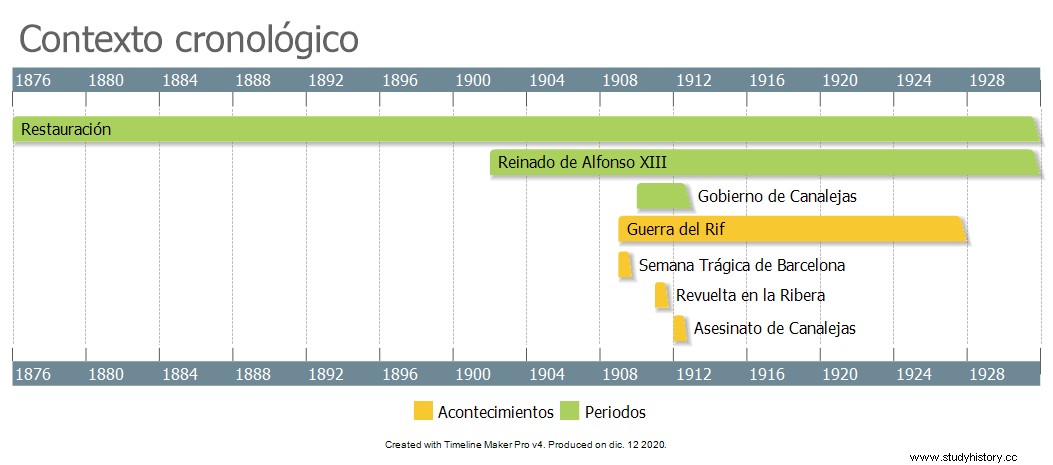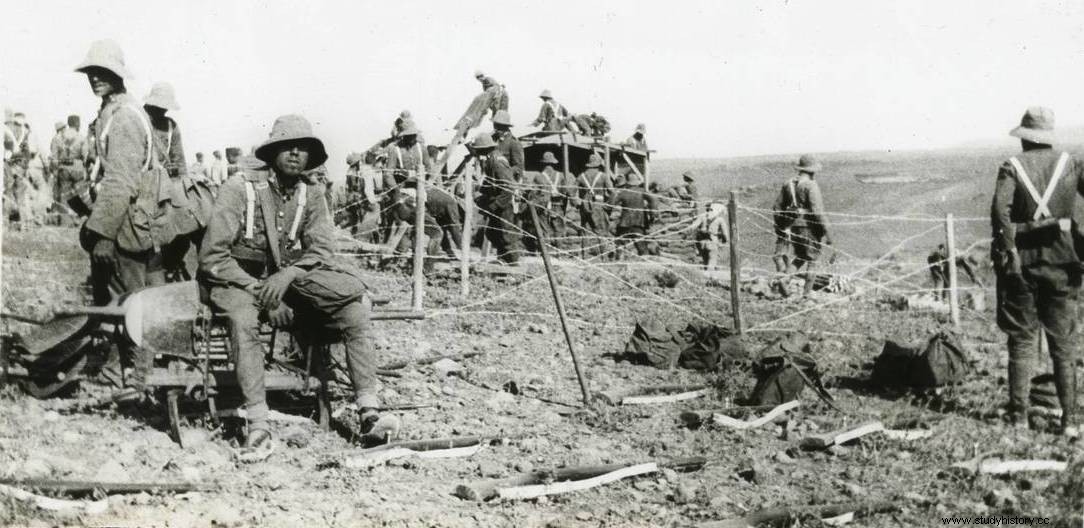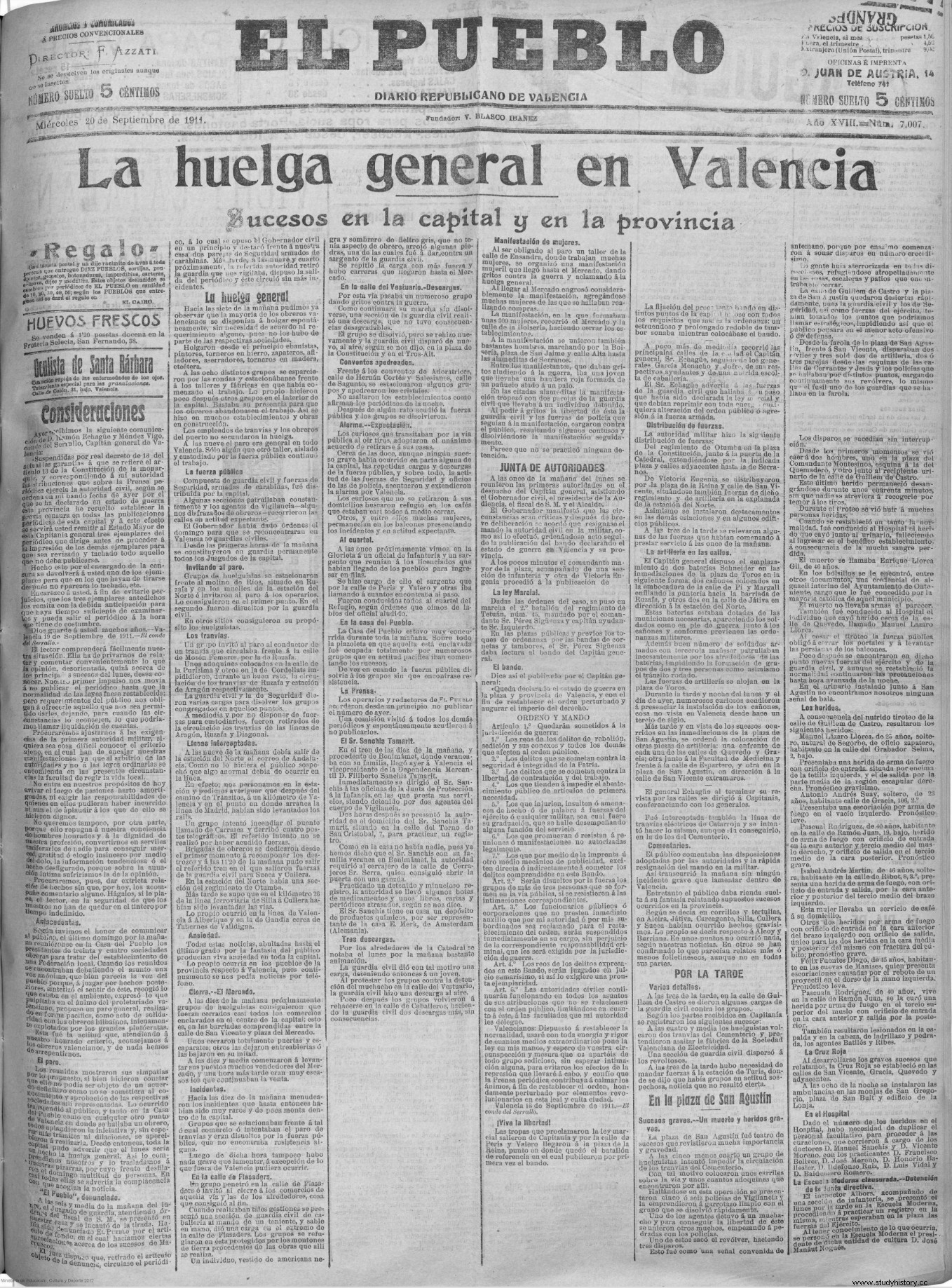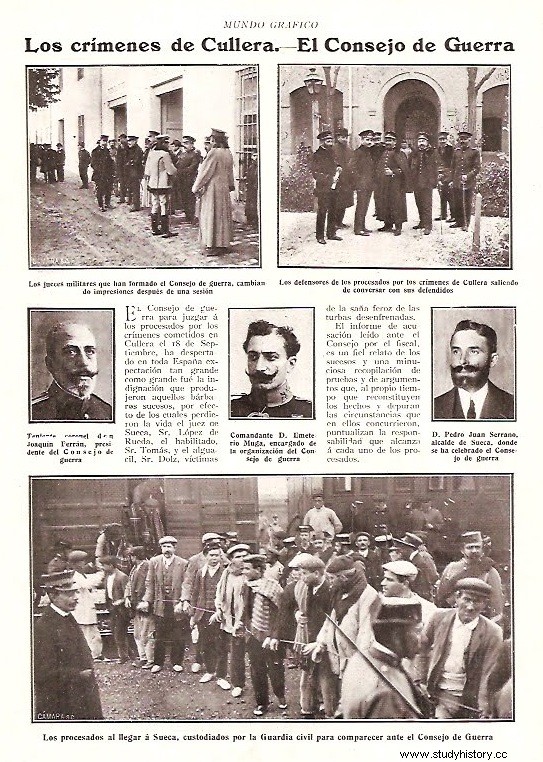Carcaixent is a town in the Ribera Alta region (Valencia). Its contemporary history appears to be dominated by the boom in orange cultivation –since the end of the 19th century– and its export to European markets, fundamentally –since the beginning of the 20th century. The originality of this growth model was based on the fact that it achieved social modernization without any industrialization process. So the impulse of commercial agriculture favored the appearance of a very significant stage of progress and social and economic modernization. However, at this stage symptoms of socio-economic and political problems also emerged that denoted the persistence of situations and popular reactions more typical of the agrarian societies of previous centuries. One of these situations was the revolt of 1911, which affected almost the entire region.

The context:the crisis of the Restoration.
To understand these facts we have to refer to the context of what was happening in Spain at that time. The historical period that concerns us is known as the Restoration; a political regime governed in the form of a liberal monarchy, but not democratic because the political system suffered from serious insufficiencies and left important sectors aside. The traditional bipartisanship that had characterized the regime since the implementation of the 1876 Constitution began to enter into crisis at the beginning of the 20th century. The rise to the throne of Alfonso XIII (1902) coincided with the weakening of the two great dynastic parties:conservatives –led by Antonio Maura– and liberals –led by José Canalejas. In addition to these major parties, other political forces began to grow:Republicans and Catalan and Basque nationalists. At the same time, the labor movement also grew and created its own organizations – anarchism created the CNT in 1910, while the UGT, created in 1888, expanded, especially in Madrid and in the industrialized Asturias and the Basque Country.

The second, more secondary problem was social discontent over the high taxes levied on the popular classes, especially consumption, which raised the price of basic products. Likewise, we must also point out the social and economic transformations that the introduction of commercial agriculture meant. The role of the landed and commercial bourgeoisie was reinforced by the aforementioned transformations, while the popular classes were affected by a double process:that of the proletarianization of the labor force – landless and economically unprotected day laborers – and greater access to or less extensive to the small property. Finally, the poor rice harvest that year (1911) exacerbated the economic problems of the popular sectors.

The revolt.
The events that we are going to analyze took place between September 16 and 21, 1911. At the beginning of that month, the first congress of the CNT was held in Madrid. He was attended by a representative from Cullera who, upon returning, announced the call for a general strike for Monday the 18th of that same month. The call had a certain success in Cullera. When the news reached Sueca, head of the judicial party, the judge of the party, accompanied by a small group of officials and civilians, went on his behalf to Cullera to put a stop to the conflict. The judge's action, reckless and without the support of the Civil Guard or the Carabineros, caused a major altercation that resulted in the death of the judge and three other officials.
The rioters dispersed throughout the region, helping to spread the conflict throughout almost all of it. Some arrived in Carcaixent and on the 18th, already at night, -according to Fogués in his History-. At night a group of trade unionists left the Republican Casino, shouting against the war and heading towards the railway station where they prevented a group of soldiers from continuing their journey to join the ranks. The next step was to declare a general strike in the town for the following day, a call that was successful.
On the morning of the 19th, some groups went to the two railway stations, where they disabled the tracks and cut off the telegraph and telephone lines, stopping all train traffic. From there they went to the consumption office, storming the building and making a pyre with furniture and documents in the street. They then stormed the Farmers' Union building, repeating the operation. His next target was City Hall; there they set fire to some dependencies, among them the Municipal Archives. The violent actions continued in the afternoon.
The conflict turned into a small civil confrontation when members of the Jaimista (Carlist) Party armed themselves to defend the religious buildings if they were attacked. They were also in charge of notifying the Captain General of what was happening in Carcaixent. The next day, the arrival of Civil Guard forces and an Army company put an end to these violent actions.

In December of the same year, a War Council was held in Carcaixent -since military legislation was applied to the rioters- in which 38 people were sentenced to prison, including two women.

Conclusions
The contradiction represented by the fact that this revolt took place in a period of economic growth and urban progress shows four things:
- The first is that this growth process was in turn generating a growing inequality between the different social groups and that while company profits increased, wages stagnated or grew little.
- The second is that popular opposition to the colonial war in Morocco could not be channeled through electoral or political means due to the obstacles and insufficiencies of the restorationist system. Therefore, on occasions, these positions were transferred to the street through revolts.
- The third is that, despite economic, urban, social and even cultural modernization, our society continued to suffer momentary crisis situations caused by rising food prices, in turn a consequence of bad harvests (in this case of rice), crises more characteristic of agrarian societies.
- The fourth is that it was a phenomenon with a strong charge of spontaneity; The weakness of the workers' organizations, especially the CNT, from which the initiative for the general strike came, prevented it from being a well-defined revolt with clear objectives.
Thus, although the fuse was the call for the strike, the social unrest accumulated by the levies for the war in Morocco, the poor rice harvest and the high prices of basic products –also charged with high taxes– were the gunpowder that sparked off the conflict. A spontaneous conflict typical of older social models that simply showed a situation of anger and discomfort in the face of specific situations, but that did not imply long-term policies or actions. Nonetheless, these events played a role in the end of his rule, precipitated by his assassination in 1912 at the hands of an anarchist.
Bibliography.
- Cerdà, M. (1981) Els moviments socials al País Valencià. Valencia:Alfons the Magnanimous.
- Fogués, F. (2000). Historia de Carcagente (original work published 1934-36). Carcaixent:M.I.Ajuntament.
http://www.historiasiglo20.org/HE/12a-2.htm
https://www.lasprovincias.es/v/20110923/comunitat/revolucion-estalla-ribera-20110923.html
https://www.levante-emv.com/comunitat-valenciana/2011/09/18/cullera-1911-levante- feliz-13036569.html
